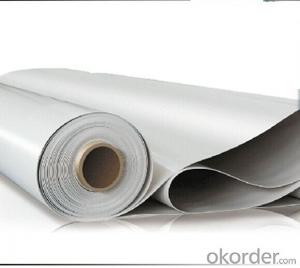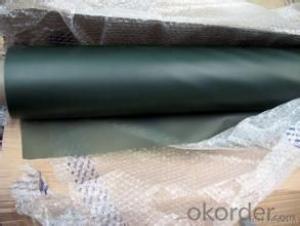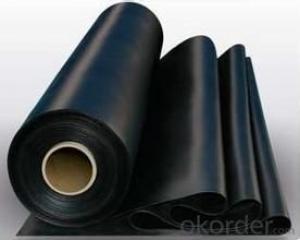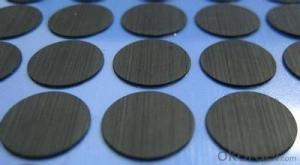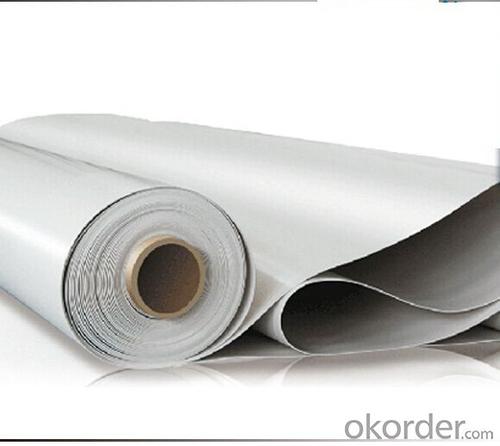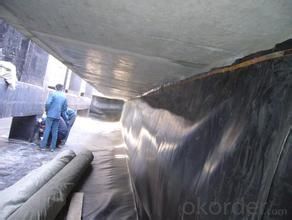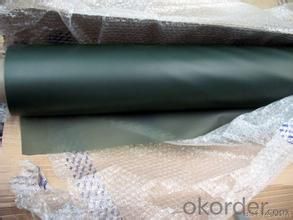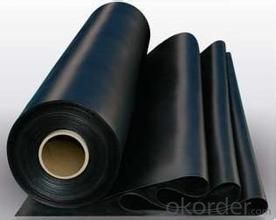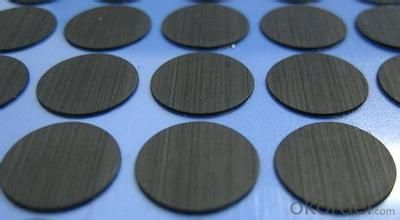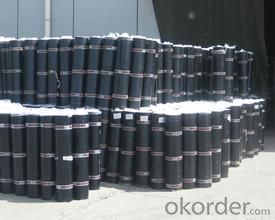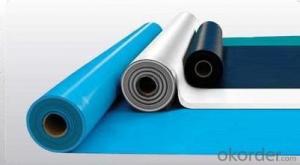EPDM Modified Waterproof Membrance for Basement and Roof
- Loading Port:
- Tianjin
- Payment Terms:
- TT or LC
- Min Order Qty:
- 5000 m²
- Supply Capability:
- 15000000 m²/month
OKorder Service Pledge
OKorder Financial Service
You Might Also Like
Quick Details
Type: | Waterproof Membrane | Place of Origin: | Shandong, China (Mainland) | Brand Name: | CMAX |
Model Number: | Excaid-D | thickness:1.2mm,1.5mm,2.0mm: | Raw mateiral:EPDM rubber | width:1200mm: | Standard:GB18173.1--2006 |
length:20m: | Tear strength:>=25KN/m | break tensile strength >=7.5MPa: | waterproof:0.3MPa,30min | break elongation:>=450%: | usage:building waterproof |
Packaging & Delivery
Packaging Details: | PE membrane and pallet |
Delivery Detail: | within 20 days after receiving downpayment |
Technical Specification:
Type | Waterproof Membrane | |||
Material | EPDM RUBBER | |||
Thickness | 1.2mm; 1.5mm;2.0mm | |||
Weight(kg/m2) | 1.2mm | 1.5mm | 2.0mm | |
1.54-1.58 | 1.79-1.83 | 2.25-2.29 | ||
Length | 20m/Roll | |||
Width | 1.2m | |||
Usage | basements, ponds, Lake, steel structure roofing, underground, tunnels etc. | |||
Packing | 24 sqm/ROLL | |||
Loading in Container | ROLLS | |||
Colors | customized | |||
Enclosure | ||||
Technical Data:
FAQ
1.Could you offer free sample ?
Yes , free sample is available .
2.What's the MOQ ?
The MOQ is 5000 M2
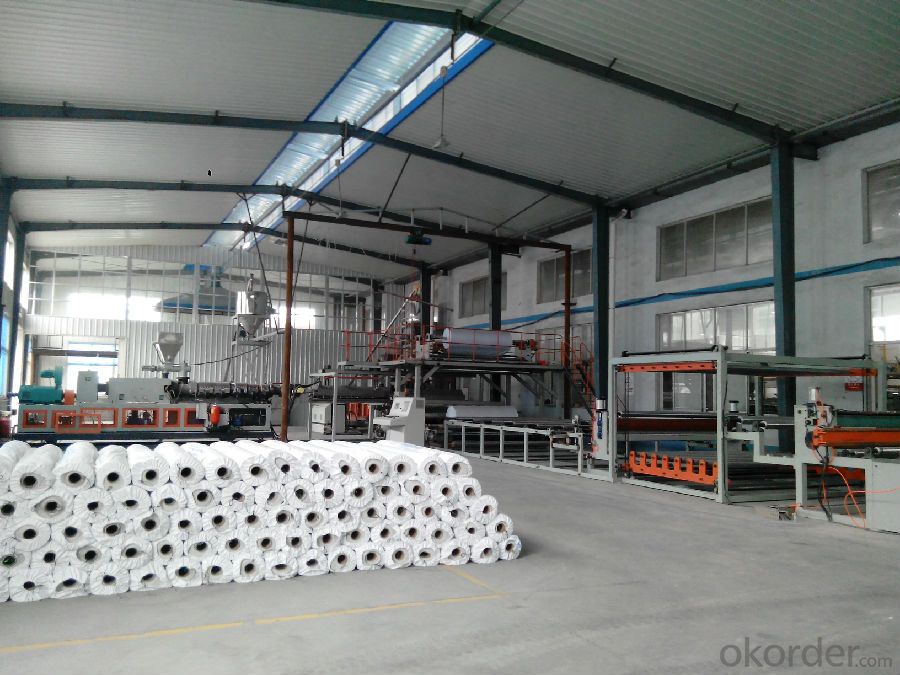
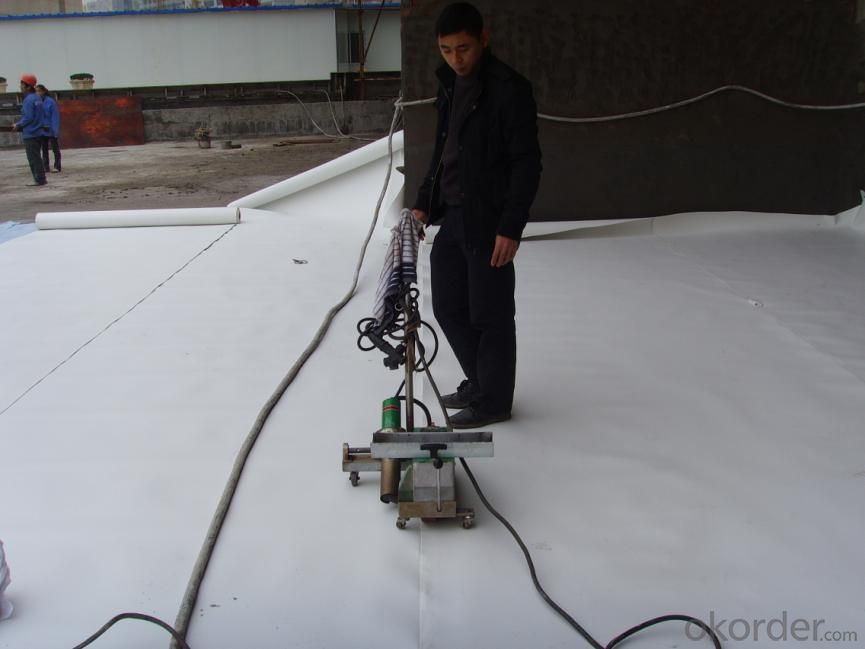

- Q: Does a waterproofing membrane require any specialized tools or equipment for installation?
- Yes, the installation of a waterproofing membrane typically requires specialized tools and equipment. Some of the common tools and equipment used for installation include a trowel or roller for spreading the membrane, a utility knife for cutting and shaping the membrane, a heat gun or propane torch for activating and adhering the membrane, a seam roller for ensuring proper bonding of seams, and a caulking gun for applying sealant around penetrations and edges. Additionally, depending on the specific type of waterproofing membrane being installed, other tools such as a primer, bonding adhesive, or specialized membrane fasteners may be required. It is important to consult the manufacturer's installation guidelines to ensure the proper tools and equipment are used for a successful installation.
- Q: Can a waterproofing membrane be installed by a homeowner or is professional installation necessary?
- Although homeowners technically have the ability to install a waterproofing membrane, it is highly recommended that they opt for professional installation in order to achieve optimal outcomes. Waterproofing membranes are specifically designed to safeguard buildings against water damage and necessitate the use of proper installation techniques and expertise to ensure their effectiveness. Professional installers possess the knowledge and experience required to accurately assess the requirements of a particular project, select the appropriate type of membrane, and install it correctly. They possess an understanding of the most effective methods for preparing surfaces, applying membranes, and sealing seams to create a barrier that is impervious to water. Furthermore, professional installers have access to specialized equipment and tools that may be essential during the installation process. They are also capable of providing warranties or guarantees for their work, which grants homeowners peace of mind and protection in the event that any issues arise in the future. While it may appear feasible for homeowners to undertake the installation themselves, any errors or improper installation techniques could result in water leaks, the growth of mold, or other costly damages. It is always preferable to invest in professional installation to ensure that the waterproofing membrane functions as intended and provides long-term protection for the building.
- Q: Are there any specific fire safety considerations for using a waterproofing membrane?
- Yes, there are specific fire safety considerations for using a waterproofing membrane. While waterproofing membranes are designed to prevent water penetration and protect structures from moisture-related issues, they may also present fire safety challenges. Firstly, it is important to consider the fire resistance rating of the waterproofing membrane. Building codes and regulations often require certain fire resistance ratings for different building elements, including roofing and wall systems. Therefore, the fire resistance rating of the waterproofing membrane should be evaluated to ensure compliance with these requirements. Additionally, the installation process of a waterproofing membrane involves the use of adhesives, sealants, and other materials that may be flammable. It is crucial to choose fire-resistant materials and ensure proper installation techniques to minimize the risk of fire hazards. Furthermore, the presence of a waterproofing membrane can affect the fire spread and smoke movement within a structure. It is essential to consider the potential impact on fire compartmentalization, evacuation routes, and the overall fire safety strategy of a building. This may involve implementing additional fire protection measures, such as fire barriers, smoke management systems, or fire-rated enclosures, to compensate for the presence of the waterproofing membrane. Regular inspections and maintenance of the waterproofing membrane are also vital. Over time, the membrane may degrade, crack, or become damaged, compromising its fire-resistant properties. Therefore, routine inspections and timely repairs or replacements are necessary to maintain the desired fire safety performance. In summary, fire safety considerations for using a waterproofing membrane involve evaluating the fire resistance rating, using fire-resistant materials during installation, assessing the impact on fire spread and smoke movement, and implementing proper maintenance practices. These considerations are crucial to ensure the overall fire safety of a building when utilizing a waterproofing membrane.
- Q: Can a waterproofing membrane be used for elevator pits and machine rooms?
- Elevator pits and machine rooms can benefit from the use of a waterproofing membrane. These areas are at risk of water infiltration due to their location or proximity to underground water sources. Such infiltration can cause damage to the elevator machinery and electrical systems. To avoid this, it is essential to apply a waterproofing membrane to these spaces. A waterproofing membrane acts as a protective layer that is applied to the surface of a structure to prevent water from penetrating. It acts as a barrier against water, keeping the area dry and free from moisture. Waterproofing membranes can be made from different materials like bitumen, rubberized asphalt, or liquid-applied coatings. When used in elevator pits and machine rooms, a waterproofing membrane provides an effective solution to prevent water seepage. It can be installed on the walls, floors, and even the ceiling of these areas, creating a seal that does not allow water to enter. The membrane is designed to withstand water pressure, ensuring that no water leaks into the elevator pit or machine room. Additionally, waterproofing membranes offer protection to the elevator machinery and electrical systems against potential damage caused by water exposure. These systems are sensitive to moisture and may malfunction or corrode when exposed to water. By utilizing a waterproofing membrane, the risk of such damage is greatly reduced, leading to enhanced reliability and longevity of the elevator system. In conclusion, the use of a waterproofing membrane is a suitable solution for elevator pits and machine rooms. It effectively prevents water infiltration, safeguards the elevator machinery and electrical systems, and ensures the overall functionality and durability of the elevator system.
- Q: Can a waterproofing membrane be used on galvanized surfaces?
- Yes, a waterproofing membrane can be used on galvanized surfaces. The membrane provides an additional layer of protection against water penetration, which is especially important for galvanized surfaces that may be prone to rusting or corrosion.
- Q: Can a waterproofing membrane be used on both horizontal and vertical surfaces of a structure?
- Yes, a waterproofing membrane can be used on both horizontal and vertical surfaces of a structure. Waterproofing membranes are designed to create a barrier against moisture and are commonly used in various applications such as roofs, basements, foundations, balconies, and walls. They are flexible and can adapt to different surface orientations, making them suitable for both horizontal and vertical installations. The membrane's flexibility allows it to be easily applied and adhere to different surfaces, providing effective protection against water infiltration and potential damages caused by moisture. Whether it is applied on a horizontal surface like a roof or a vertical surface like a wall, a waterproofing membrane can help maintain the integrity and longevity of a structure by preventing water penetration and potential water-related issues.
- Q: Can a waterproofing membrane be used for walkways or pedestrian bridges?
- Certainly! Walkways or pedestrian bridges can indeed utilize waterproofing membranes. These membranes are specifically engineered to establish a barrier that effectively hinders water penetration, thereby averting potential harm to the structure. When a waterproofing membrane is applied to the surface of a walkway or pedestrian bridge, it effectively safeguards the underlying construction from water infiltration, thereby augmenting its endurance and longevity. This aspect becomes particularly crucial in regions that experience heavy rainfall or when the walkway or bridge is exposed to water sources like rivers or lakes. Moreover, apart from their primary function, waterproofing membranes can also offer supplementary advantages such as enhancing slip resistance and shielding against chemicals or pollutants.
- Q: Can a waterproofing membrane be used on drywall surfaces?
- No, a waterproofing membrane is typically not used on drywall surfaces. Drywall is not designed to be waterproof and would not provide a suitable substrate for the membrane.
- Q: Can a waterproofing membrane be used on glass block surfaces?
- No, a waterproofing membrane cannot be used on glass block surfaces as they are already inherently waterproof.
- Q: Can a waterproofing membrane be used for a shower enclosure?
- Yes, a waterproofing membrane can be used for a shower enclosure. These membranes are specifically designed to prevent water from seeping through the walls and floor, ensuring a watertight seal. They are commonly used in construction and renovation projects to protect areas prone to moisture, such as bathrooms and showers.
Send your message to us
EPDM Modified Waterproof Membrance for Basement and Roof
- Loading Port:
- Tianjin
- Payment Terms:
- TT or LC
- Min Order Qty:
- 5000 m²
- Supply Capability:
- 15000000 m²/month
OKorder Service Pledge
OKorder Financial Service
Similar products
Hot products
Hot Searches
Related keywords
